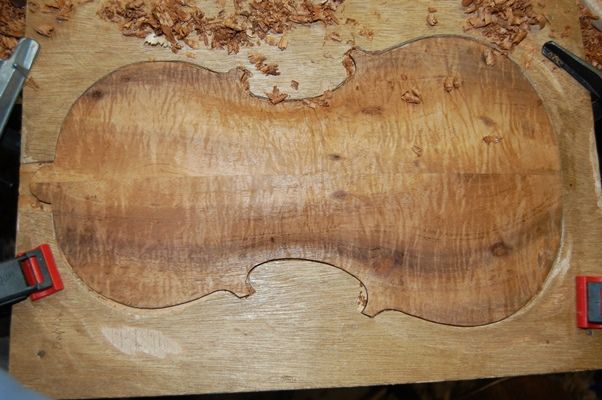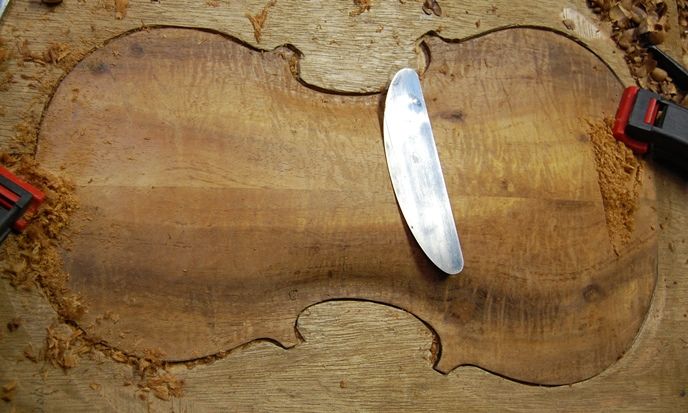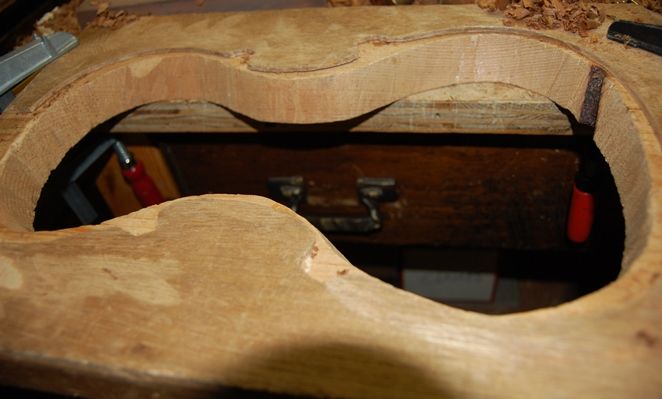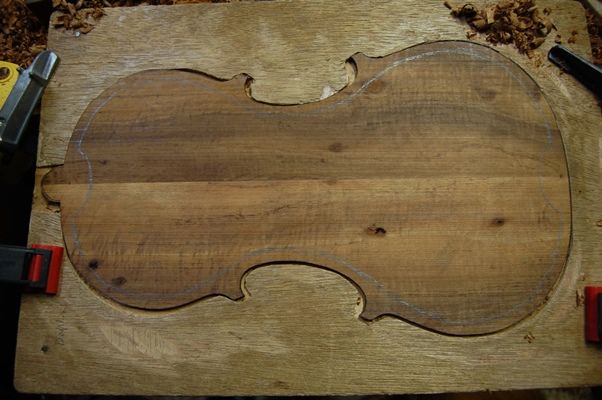Five String Progress #11: Back Plate completed and installed.
Inside arching
The inside arching took a lot of time and energy, but it is just part of the job. Once it begins to get closer to completion it is a lot more encouraging, but initially, it is just a lot of work.
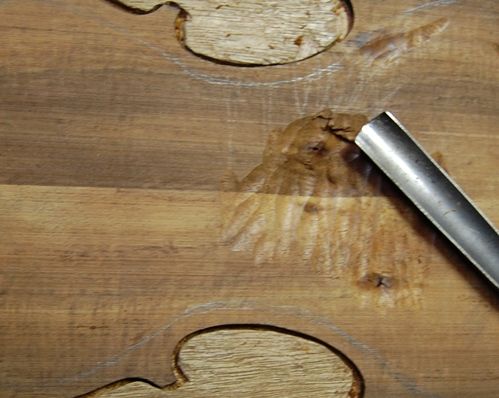
Bit by bit, however, the project begins to take shape:
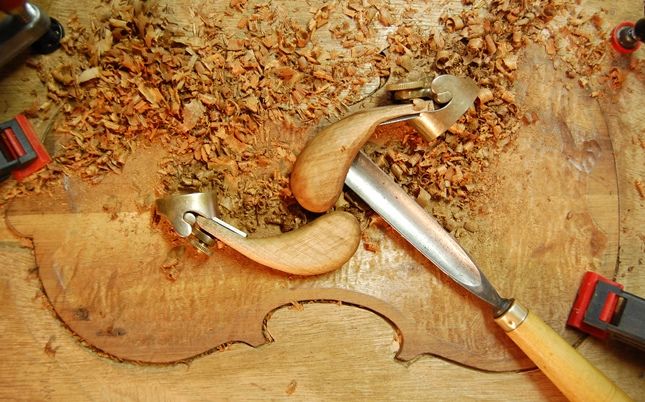
Graduation:
Here, you can see the curvature of the plate, but you can also see why I have to stop using the planes, relatively early, and revert to scrapers: the curly wood tears out badly under the plane.
I also have to measure the thickness over and over, using a graduation caliper, so as not to cut too deeply. This process is called “graduation”, I suppose, because the thicknesses have to gradually change from area to area. They are not entirely symmetrical, but there is a general plan and some practical limitations.
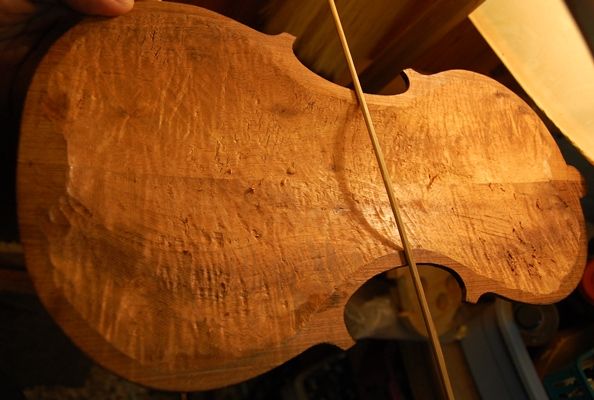
Scraping:
Now we work with scrapers:

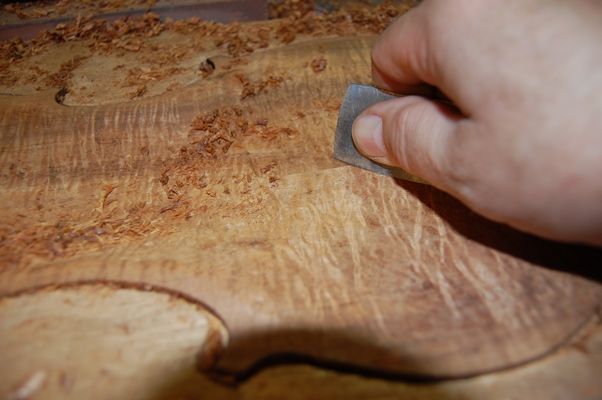
Final inside preparation for gluing:
I almost forgot to take pictures! At this point the plate is complete, except for purfling. In the past, I have always installed the purfling before attaching the plates to the corpus, but on this instrument I decided to try purfling after plate installation. I think I like it. I have better control of my edge over-hang in terms of both size and shape.
So: the inside edgework has been done, the label is installed, and the plate is ready to be glued in place.
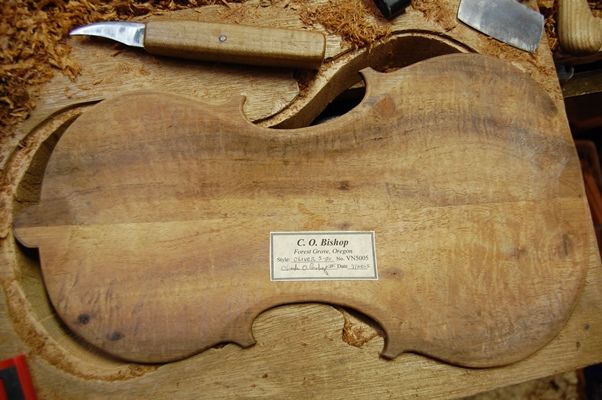
Plate installation:
What I do, nowadays, is to carefully dry-fit the plate to the garland so that it is exactly the way I want it, clamping securely over all the blocks (about eight clamps in all). Then I remove a couple of clamps at a time and slip hot hide glue into the joint, wipe it down with a rag and hot water, and re-clamp that area, adding as many clamps as will fit. I work my way all the way around the plate, and never have to hurry, or suffer any fear that something will get out of alignment while I am working.
For the first four of five instruments I made, I would apply glue all the way around the garland then engage in a panicky race to get the plate aligned and all the clamps in place before the glue gelled. Not good. Usually, about that time, the phone would ring, too… (sigh…).
This way is very peaceful, by comparison, but I have learned to be less compulsive about answering the phone while gluing, too.
And here is the completed corpus, with the back plate glued in place and secured with spool clamps:
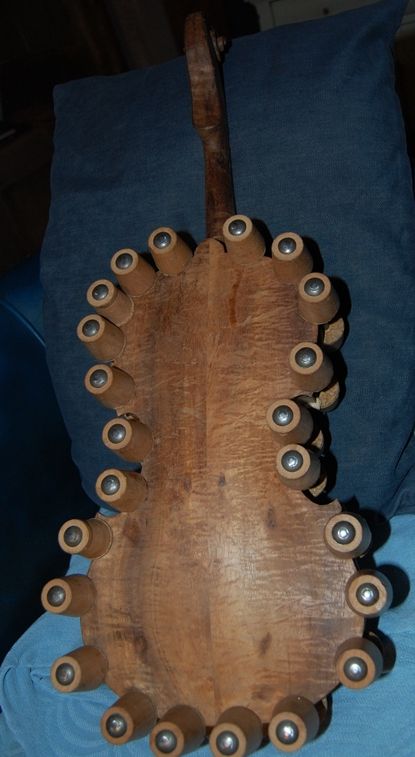
Once the glue is dry, I will be ready to begin purfling the back plate.
Thanks for looking.

 Follow
Follow

